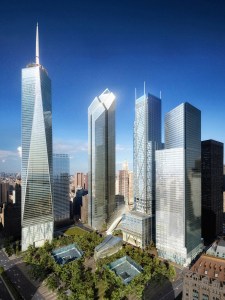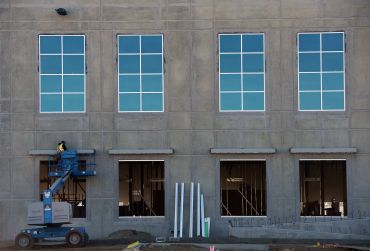 Lower Manhattan wants more liberty.
Lower Manhattan wants more liberty.
The $8 billion Liberty Bond program, an incentive created in the aftermath of the Sept. 11, 2001, terrorist attacks, is scheduled to sunset on Dec. 31, ending the availability of tax-free bonds that would save hundreds of millions of dollars in costs to rebuild at the World Trade Center site. But, of course, the narrative of the 16-acre site has been one of multiyear delays and battles between developer Larry Silverstein and the Port Authority, the site’s landlord, making the remaining $3.2 billion allocated toward the Liberty Bond program difficult to issue, and nearly impossible to use, before the end of the year.
In recent months, the Port Authority and city and state officials have been urging members of Congress to pass legislation that would extend the program. Under discussion currently, according to multiple people familiar with the situation, is a one-year extension.
“The House is expected to consider a one-year extension of the bonds in legislation that addresses other expiring provisions before the end of the year,” said an aide to Representative Charles Rangel, chairman of the Ways and Means Committee and a key figure on this issue.
Should the year-end deadline be missed, officials are now looking for a retroactive extension some time next year if Congress isn’t able to hit the Dec. 31 deadline, according to a Port Authority official.
At the same time, perhaps not content to rely on the public sector’s word that an extension will happen, the 78-year-old Mr. Silverstein is moving to sell the $2.59 billion in bonds allocated to him before the year is out. His request is set to go before a state board on the morning of Dec. 2, and, according to a public notice for the meeting and people familiar with discussions, the bonds would essentially be put into escrow before later being restructured, presumably when a viable rebuilding plan is crafted. Silverstein Properties declined to comment on the action.
With regard to the Congressional action, the extension would not be the first. Rebuilding Lower Manhattan, particularly the complete World Trade Center site, has taken eons longer than first envisioned by city and state officials in the attacks’ aftermath, as dates have been repeatedly pushed back. In 2004, after urging by Mayor Bloomberg and Governor George Pataki, President Bush asked Congress to extend the availability of Liberty Bonds by another five years, to a point when it seemed all the construction would have been under way.
The bonds, sold by developers to investors, are exempt from city, state and federal taxes, bringing in lower interest rates and often giving savings to developers in the neighborhood of 20 percent compared with standard taxable financing.
More than 20 projects have used Liberty Bonds since 2001, including numerous downtown residential towers, and, controversially, buildings in midtown, including the Bank of America tower.
Now all the rest of the projects have left the Liberty Bond party—most are completed at this point—leaving only Mr. Silverstein and the Port Authority to issue their allocation. (The Port Authority has about $700 million in Liberty Bonds it would use).
What, exactly, Mr. Silverstein will use the bonds for has yet to determined, as does the timeline. The current rebuilding contract assumed that Mr. Silverstein would be able to finance all three of his towers at once, using insurance money from the original World Trade Center, liberty bonds and additional private financing. But with no private tenants to speak of, a dry well of private financing and delays on public infrastructure portions of the site, the vision of three towers rising at once has vanished.
Mr. Silverstein is currently locked in a dispute with the Port Authority over how to finance the towers—the two sides remain in arbitration, as Mr. Silverstein has said the Port Authority owes him damages for its repeated delays—and the sites for the planned high-rise Towers 2 and 3 sit as giant excavated holes. Mr. Silverstein has said that without a resolution, he will need to stop building Tower 4, which is currently rising above street-level.
ebrown@observer.com


